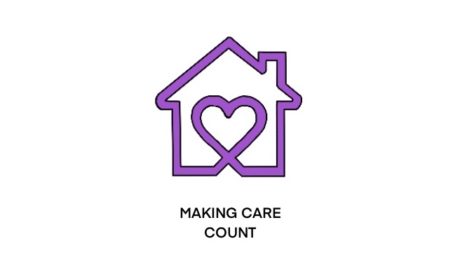Making Care Count
The COVID-19 pandemic has informed our understanding of the care economy, exposing disproportionate inequities that must be addressed to alleviate the international erasure of care workers. These issues are addressed in the latest Susan and Michael J. Angelides Lecture, in which Naomi Klein moderates a discussion between Congresswoman Pramila Jayapal and CWE-GAM researcher Dr. İpek İlkkaracan on COVID-19 and the care economy.
We live in an economic system that has traditionally deprioritized and invisibilized care workers, many of which are women of color, migrant, and poor women. The economic crisis brought on by the pandemic has consequently given policymakers and academics “a once-in-a-generation opportunity to address [the valuation of care work] from an intersectional [approach],” states Congresswoman Jayapal.
The Care Crisis Exposed by the Pandemic Recession:
When mass unemployment hit during the pandemic, the cracks in the economic infrastructure of America began to show. As millions of people lost their jobs, the highest increase in the number of uninsured Americans was subsequently recorded. This high number of uninsured people is a direct consequence of healthcare being employer-sponsored. Congresswoman Jayapal notes that “Medicare For All would have strengthened the response to the pandemic…30 percent of COVID-19 deaths were related to a lack of insurance.”
While gains were made in the past decade in regards to gender equality in the workplace, Congresswoman Jayapal notes that “as soon as the pandemic hit, it was the women who went back to taking care of [their] families.” Dr. İpek İlkkaracan explains that this is because “the nature of women’s employment is often determined by their care responsibilities…unpaid care work is often articulated as one of the most significant barriers to labor force participation.” This notion was reflected in jobs reports—in December of 2020, women accounted for 100 percent of job loss, and within that, 154,000 Black women exited the workforce.
In its current state, the care economy produces a pattern of inequality that disproportionately affects women of color and migrant women. The average caregiver salary is $12.74, and the care work sector is marked by poor working conditions with no adequate social protections and low wages. This is why, as Congresswoman Jayapal notes, the fight for one fair wage is pertinent. “An increase in the minimum wage would give 32 million workers a raise, 60 percent of which are women while 1 in 4 of the women who would benefit from this increase are Black or Latina.”
A Framework for a More Caring Economy:
Dr. İpek İlkkaracan has developed a framework that acknowledges the care economy. This framework, coined as the Purple Economy (a nod to the color representative of many women’s movements), envisions a gender-egalitarian and caring economic system. Dr. İlkkaracan recommends “labor market regulations and investment in care services such as long-term care, early childhood education, education, and healthcare” as policy interventions to start the process of adequately valuing care.
Not only is investment in care important from a humanitarian and ethical perspective, but it is also conducive to economic stability. Dr. İlkkaracan’s research has revealed that investment in care services produces a high employment multiplier: for every dollar invested in care, three times as many jobs are created in the wider economy. This is because the care sector is intertwined with other sectors such as food, transport, and financial services. In the Asia-Pacific region, Dr. İlkkaracan’s research has shown that “up to four trillion dollars could be added to GDP if unpaid care work (75% of which done by women) was valued in market terms.” While this may seem astronomical, the amount of unpaid work completed globally in one day equates to 16.4 billion hours—which translates to two billion full-time jobs. Dr. İlkkaracan’s recent research also reveals that a “3.5-4% commitment of GDP to investment in care services would create 120 million additional jobs and have a large impact on poverty alleviation.”
To watch the full conversation and learn more about the Purple Economy, see below.
Dr. İpek İlkkaracan is a CWE-GAM researcher a part of the Rethinking Macroeconomics and Gender Aware Applied Economics Working Groups.
This blog was authored by Lucie Prewitt, a research assistant for the CWE-GAM project.
- Published in Child Care, COVID 19, Economic Recovery, Gender-Equal Economy, Policy, Rethinking Macroeconomics, U.S.

